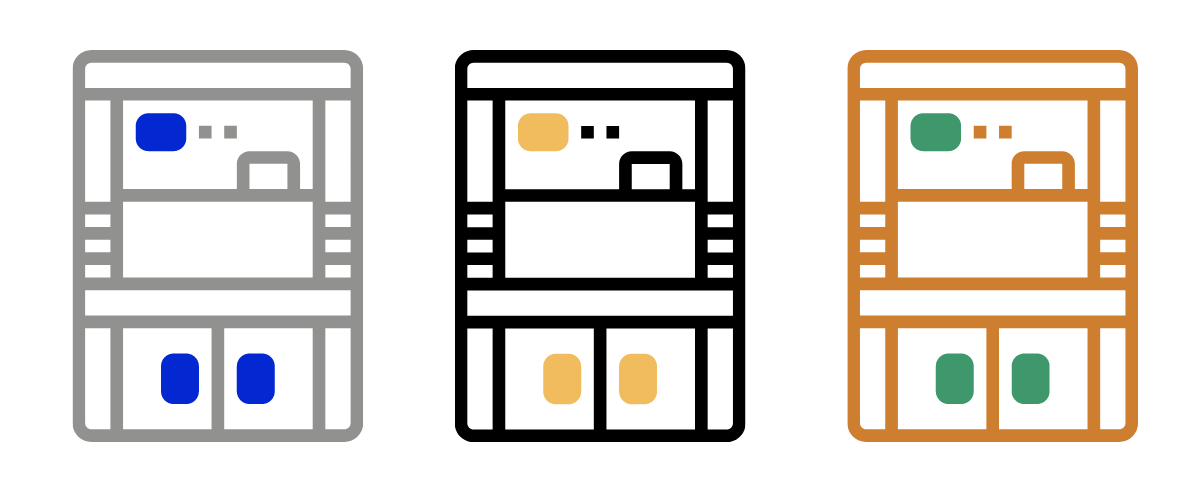
In any lab, safety is the number one priority. Labs are designed with risk mitigation in mind, specifically built to facilitate safe working conditions and reduce cross-contamination, exposure to toxic chemicals and fumes, and to prevent other potentially dangerous or harmful circumstances. The best labs utilize a combination of personnel protocol and special equipment to keep their staff and facilities safe, and today, we’ll be discussing one of those tools, what it does, and how to use it.
Fume hoods are now a standard component of many educational, research, and commercial lab facilities, helping to keep students and researchers safe while providing an optimum research environment. At OnePointe Solutions, we help our clients design and built high-efficiency laboratories complete with all the furniture and equipment needed to promote safety.
Depending on the specific needs of your facility, we can help you to select the perfect fume hood to keep your lab free from harmful fumes.
What is a Fume Hood?
When handling chemicals, viral microbes, bacteria, and other potentially harmful substances, it is important to know whether the substance can become airborne. During the experimentation and research process, many chemical and biological agents have the potential to release droplets, fumes, or toxic vapors, which can be inhaled by lab personnel.
While some chemical fumes may be harmless in small amounts, inhaling various chemicals day-in and day-out can have lasting effects, even if they are not immediately noticeable. Similarly, airborne viral droplets may be easy for the immune system to fight off, but researchers working with highly infectious agents may not be so lucky.
Inhale the wrong chemical or biological compound, and it could mean serious illness or injury.
A fume hood is used to all but eliminate the risks associated with working with chemicals and viral compounds by drawing airborne droplets and fumes away from the lab environment and into a filtration system. Using suction, fume hoods collect potentially toxic vapors, directing them through a series of filtration systems before recirculating the air.
In this way, fume hoods help to protect researchers from respiratory exposure to toxins, keeping them safe and allowing them to focus on their work.
Using a Fume Hood
Fume hoods are used to remove toxic fumes and airborne contaminants from the laboratory workspace, removing both the risk of contamination and any irritating odor. Fume hoods provide an isolated environment in which researchers can safely perform research and experiments without the risk of accidentally inhaling toxic fumes. To enjoy the full effects, lab workers simply perform observations and experiments directly under or inside of the fume hood, which does the rest of the work on its own. Pulling away and filtering the contaminated air, using a fume hood eliminates the possibility of the vapors making their way into the general workspace.
Types of Fume Hood
Depending on the type of work being performed in your facility, fume hood needs may vary. Because of this, there is a wide range of fume hood types, each designed to fit a particular job or purpose in the lab. Here are just some of the common types of fume hoods you may come across in your research:
ADA Fume Hood
To ensure all personnel will be able to utilize facility fume hoods to the fullest, many lab designers choose ADA compliant fume hoods, which are optimized for safe and easy handling. Meticulously designed according to standards set by the Americans with Disabilities Act, ADA fume hoods include features like constant airflow, which can make working under a fume hood more comfortable for technicians using wheelchairs.
Add Air Fume Hood
Conventional fume hoods primarily utilize conditioned air pulled directly from the facility’s HVAC system. Add air fume hoods collect unconditioned air from outside, reducing energy costs and creating a more efficient air-in air-out cycle. Some add air fume hoods pull as much as 70% of their air from the outdoors, seriously reducing dependence on air conditioning. This is particularly convenient in winter since no temperature regulation is needed to cool artificially warmed air.
Bench-Top Fume Hood
Bench-top fume hoods do not have their own mount or support system, and instead must be placed atop an existing work surface. Bench-top fume hoods are a great choice if you are running low on floor space but still need a full-size fume hood since this type of fume hood can simply be added to an existing workspace.
Biosafety Cabinet
In labs handling viral microbes and infectious diseases, it is vital to have an enclosed, ventilated workspace to prevent lab technicians from accidental exposure and illness. All materials that could contain viral or infectious pathogens should be examined and tested within the safety of a fume hood, which will filter and release the air to prevent harmful materials from circulating through the facility.
Canopy Fume Hood
If your lab handles smelly, but nontoxic chemicals and materials, a canopy fume hood could help to reduce foul odors. Canopy fume hoods are typically suspended or wall-mounted for easy accessibility and do not include an enclosed chamber. Canopy hoods remove fumes, steam, and smoke, eliminating harsh smells and helping to regulate temperature and humidity. Appropriate for odor reduction only, canopy fume hoods do not provide the same microbial filtration as other types of fume hoods.
Chemical Fume Hood
General chemistry and chemical fume hoods are a mainstay of virtually every research and education lab and are used to reduce the risks associated with working with common chemicals and solvents. Toxic fumes, spills, chemical reactions, and airborne droplets can be harmful to human health if inhaled or ingested, and over time, prolonged exposure can have drastic consequences. As such, lab techs always perform experiments under a chemical fume hood, which pulls fumes away from technicians and filters it, removing toxicity from the air.
Demonstration Hood
Demonstration hoods (sometimes called educational hoods) are hoods designed to optimize sightlines for easy teaching demos. Demonstration hoods typically have four transparent sides to allow students to see from every angle, no matter where the teacher may be standing. Used for the same purpose as typical chemistry fume hoods, demonstration hoods differ only in their visual appearance but provide the same enhanced protection from respiratory toxin exposure.
Ductless Fume Hood
Conventional fume hoods need to be hooked up to a facility’s ductwork to guide toxins outside, but not all facilities are equipped with the same ductwork and filtration. Rather than gathering air to be transported outside the facility, ductless fume hoods collect air and filter it internally using a combination of carbon and HEPA filters. Once fully filtered, ductless fume hoods release the clean air back into the workspace.
Extractor Arm/Snorkel Arm
An extractor or snorkel arm provides localized filtration of fumes and odors in the lab, and are ideal for smaller facilities or labs not handling viral compounds. Easy to mount to the wall, ceiling, or a workbench, snorkel arms take up far less space than conventional fume hoods and are an excellent option for labs with less extensive filtration and ventilation requirements. An extractor arm can easily be added to even the smallest space, facilitating important scientific research and discovery no matter how small the lab may be.
Floor-Mounted Fume Hood
Large and freestanding, floor-mounted fume hoods are ideal for labs handling large volumes of chemical substances, or those with large equipment. While conventional fume hoods are ideal for small, handheld experiments, floor-mounted fume hoods allow for more extensive, large-scale testing, and can accommodate more materials and tools.
High-Performance Fume Hood
High-performance fume hoods are designed to be efficient, saving you money and reducing energy consumption. High-performance fume hoods process only the amount of air necessary to do the job, no more, no less, ensuring there is never any waste and keeping your utility bills from skyrocketing.
Low Flow Fume Hood
As the name suggests, low flow fume hoods use less air overall, often saving facilities up to 40% or more on their energy bills. Low flow fume hoods are great for general testing, odor elimination, and other day to day tasks, but may not be ideal for more extensive or risky testing.
Perchloric Acid Fume Hood
When using perchloric acid, technicians run the risk of producing perchlorate salt formation. The steel used to line a perchloric acid fume hood is specifically designed to reduce and eliminate perchlorate salt buildup, helping to keep the lab environment clean and residue-free.
Polypropylene Fume Hood
Labs that utilize acid-rich chemicals should invest in a polypropylene fume hood, which helps to ventilate air and prevent harsh chemicals from damaging surfaces or creating rough, porous places for microbes and germs to collect.
Radioisotope Fume Hood
Labs handling radioactive materials should use a radioisotope fume hood, a type of fume hood that helps remove odors while also protecting technicians and the facility from corrosion and cross-contamination.
Walk-In Fume Hood
Large enough to accommodate a tech and their equipment, walk-in fume hoods allow techs to securely work without the risk of exposing the rest of the facility to toxins. Walk-in fume hoods ventilate and filter air just like common chemical fume hoods, and can even hold accessories and tools that are frequently used for a specific type of testing. Taking up the most room by far, walk-in fume hoods are ideal for larger research facilities and team collaboration.
Selecting a Fume Hood
No matter what the specific needs of your laboratory may be, the OnePointe Solutions lab design team can help you find exactly what you are looking for. We carry a range of fume hood options, work with some of the top HVAC and air filtration professionals in the industry, and even built custom safety glass enclosures for our clients with unique needs.
It all starts with a visit and consultation from OnePointe Solutions designers who will work with you to determine what the best option will be for your facility. Once we have gained a better understanding of the scope of your work, we’ll help you to locate and select the best fume hood for your needs, and provide expert installation services to ensure the project is completed without a hitch.
Need a Fume Hood?
Call us today at (866) 222-7494 to get started. Also, want more advice on choosing the right lab equipment? Visit OnePointe Solutions online today to explore our selection of customizable lab furniture, and be sure to check out our blog for more content about fume hoods like installation, types, fume hood costs and other lab topics!


